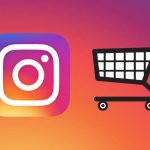What is Instagram?
— December 7, 2017
Instagram is a social media platform, owned by Facebook, where people can capture and share their world with friends and family one photo at a time. Once thought to be nothing more than a platform for sharing what you had for breakfast and the outfit you’re wearing for the day, the network has grown to more than 800 million monthly users since its creation in 2010. It’s now one of the most popular image sharing networks on the web today, and has caught the attention of advertisers of all kinds.
This is the first in a three-part series, designed to help you see how to make the most of an Instagram presence for your brand. We’ll cover the basics of Instagram in this piece, and then move onto setting up your account, and finally, using Instagram for SEO.

Isn’t Instagram Just for Food and Fashion?
While it may have seemed that way in the beginning, it’s for anything you want, really. Share photos of your kids, pets, flowers, whatever you want. Instagram has worked to make a more immersive experience within the app, with direct messaging, shoppable images, stories, and more. If you can photograph it, you can make it work for Instagram.
With direct messaging, you can reach out directly to users you want to connect with. This can help you address customer service issues, find potential influencers to work with to promote your brand, and more.
With shoppable images, users in the United States can show and browse products from posts in feed, on profile, and in explore. The feature is still relatively new, so if you notice your business account doesn’t have it yet, don’t panic. It’s been rolling out gradually, expanding to thousands of businesses. Businesses will have the option to create and tag a post directly from the Instagram iOS app. (There’s no word on the Android app right now, but it’s a fairly safe bet to believe that it will become an option in the future.)
Instagram Stories came about as a way to replicate (read: compete with) Snapchat’s similar feature. It’s a temporary feed that disappears after 24 hours, making it a great way to market flash sales or to show your products in action. And perhaps by no real surprise, the feature has also made its way to Facebook Messenger. It’s also a great way to show a day in the life of your business, using both still photos and videos. You can turn your blog content into smaller articles and use Instagram Stories to put together a series of short how to articles on nearly any topic. If you also use Facebook Live, you could use Instagram stories to tease a live broadcast later in the day. Or, if you’ve got a major company milestone, use Stories to celebrate it. Right now, you can only post Stories from the app, but the feature will soon be added to the web platform.
What if I’m Not Marketing Products?
Marketing products is easier on Instagram than marketing services, simply because you have tangible products you can stage and photograph for content. However, just because you’re not marketing products doesn’t mean you should ignore Instagram. You can use it to drive traffic to your website, increase brand awareness, attract top talent, increase you customer satisfaction, and find and build relationships with influencers.
Think about what goals you are trying to achieve, and look at how using Instagram can help you get there. You should come up with a list of SMART goals as you’re developing your Instagram strategy, so you can build campaigns with them in mind.
The way you use Instagram will vary slightly if your goal is to build brand awareness or grow your following. If you’re aiming to get more sales, or drive more traffic to your website, then using a PPC campaign or working with influencers may be the best way to reach those goals.
How Does Instagram Influence SEO?
Instagram has a built-in search function, based on hashtags, location, and names of people/brands/companies. If someone types in your company name or the hashtags you use most often, you want to be in control of what shows up, just like you would in any other search engine like Google or Bing. Social media and SEO are interconnected, but there are some mixed thoughts on whether or not social media engagement affects your ranks in the search results. Google has officially said it doesn’t use social media for ranking, but social engagement often leads to more linking opportunities, and increased traffic to your website, which are used as ranking factors.
Native search within the Instagram interface allows people to search and find you. Those search results are based on a number of factors, including who you follow, who you’re connected, and what photos and videos you like.
If you want to make sure you’re using the most popular relevant hashtags to help people discover your content, you can use tools like Websta, Hashtagify, and RiteTag to make sure you are on the right track. These analysis tools can help you narrow down the list of options to ensure you’re using the ones that will generate the most traffic on your photos.
Digital & Social Articles on Business 2 Community
(28)













